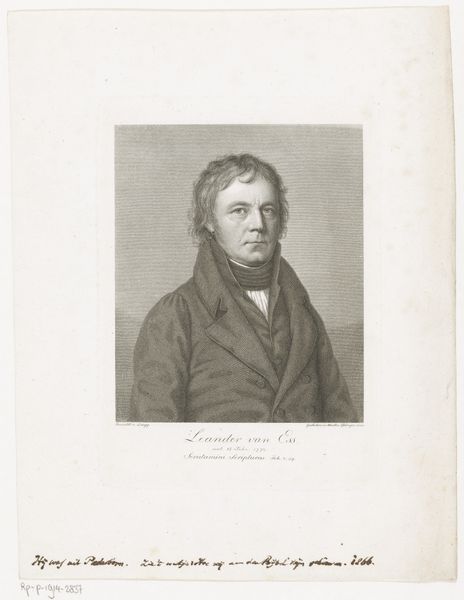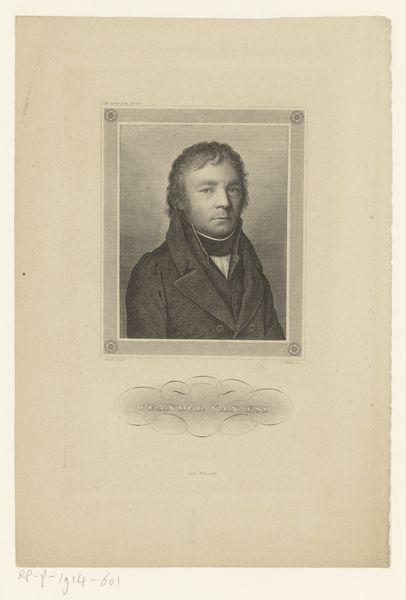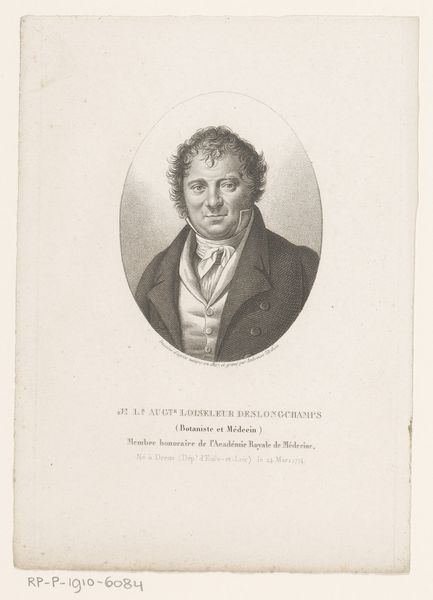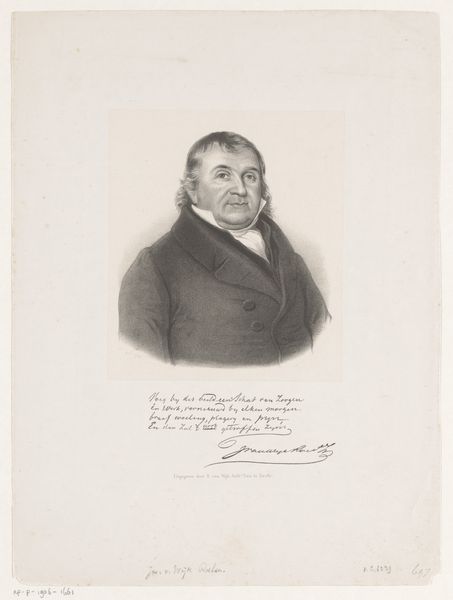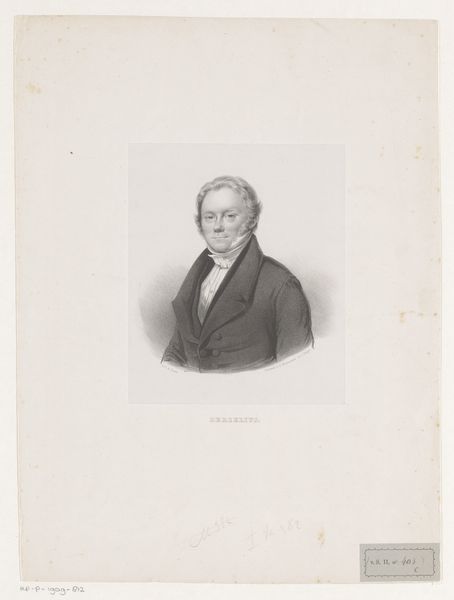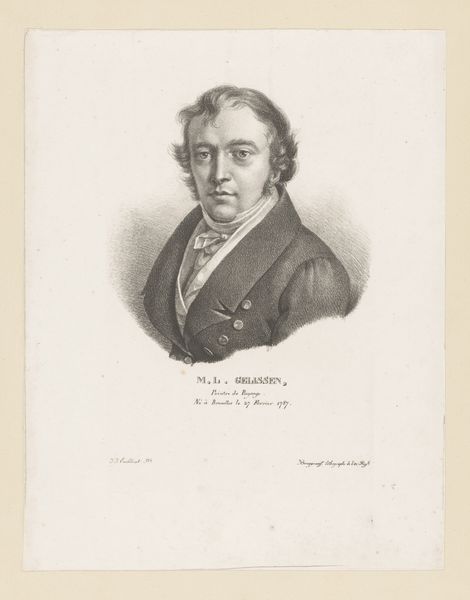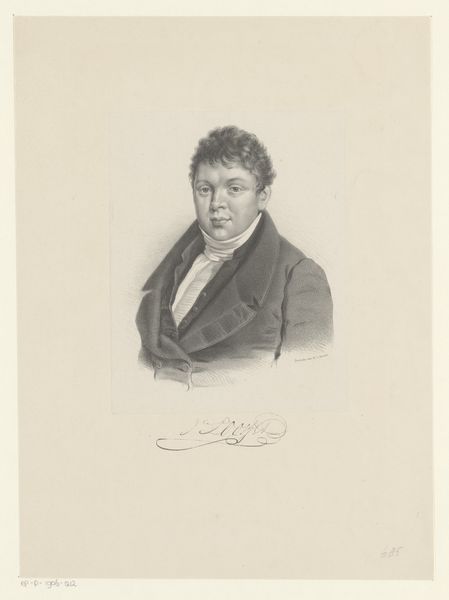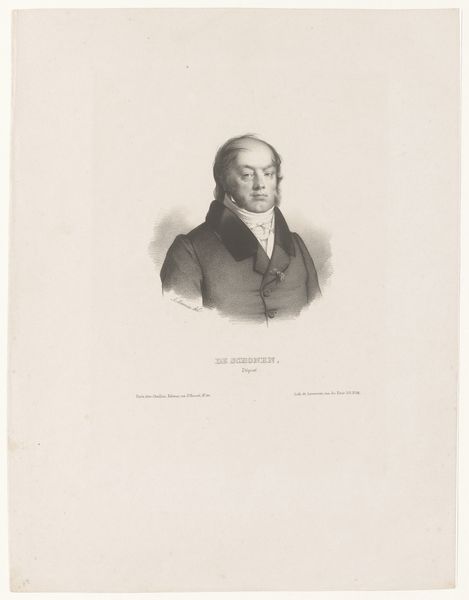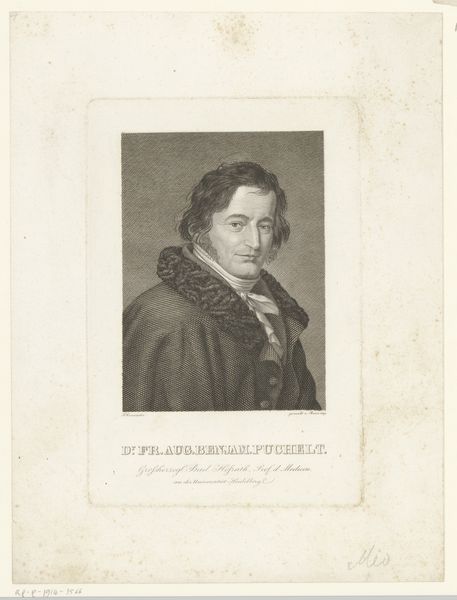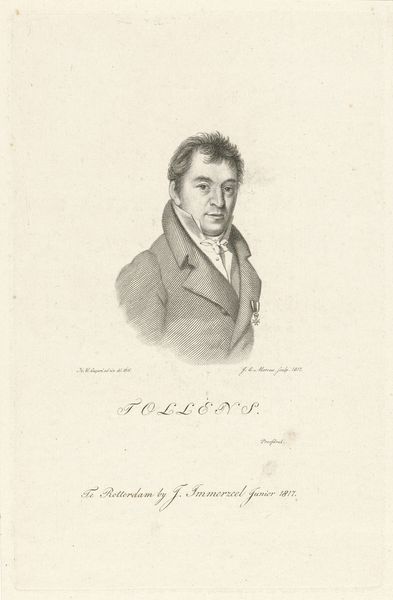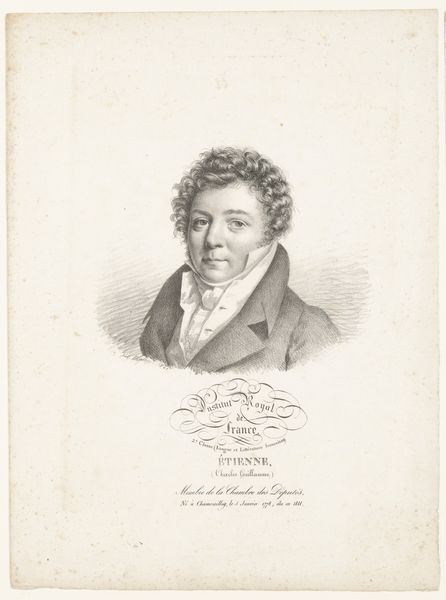
print, engraving
#
portrait
#
neoclacissism
# print
#
old engraving style
#
engraving
#
realism
Dimensions: height 221 mm, width 140 mm
Copyright: Rijks Museum: Open Domain
Editor: Here we have Friedrich Wilhelm Bollinger’s print “Dr. H.G. Tzschirner” from 1822, an engraving currently housed at the Rijksmuseum. I’m struck by how the precision of the engraved lines lends a very serious air to the portrait. What stands out to you about this particular work? Curator: For me, it’s the way the engraving medium itself reinforces the sitter's social position. Consider the labor involved: the skilled artisan meticulously translating an image into a series of precise lines etched into a metal plate. This process of reproduction – creating a multiple – democratizes the image somewhat, making it more accessible than a unique painted portrait might be. Yet, the very act of commissioning such a print speaks to the sitter’s status, doesn't it? He clearly has access to resources and the social capital to warrant this kind of visual representation. Editor: That’s a great point, about the interplay of accessibility and status. Do you think the material itself influences our perception? Would it be different as painting, even with same pose? Curator: Absolutely. A painting, while perhaps more immediately visually striking, emphasizes the individual artist's hand and is, by its nature, unique and therefore often more expensive. Engraving, though requiring significant skill, implies reproducibility and circulation, almost like a form of early mass media. It speaks to the burgeoning print culture of the time. We need to also recognize, this engraving existed and circulated within a specific network – likely academics and those interested in Theology, based on Tzschirner’s title mentioned on the print itself. This gives the artwork even more importance. Editor: So, by considering the material and means of production, we uncover not only the artistic intent but also the social dynamics at play. Curator: Precisely! The choice of engraving is as important as the subject himself. It provides valuable insights into the socio-economic context and the intended audience for the artwork. Editor: I’ll definitely be paying closer attention to the materials artists use in future analyses! Curator: And remember to think about who has access to those materials and skills – that's key!
Comments
No comments
Be the first to comment and join the conversation on the ultimate creative platform.
